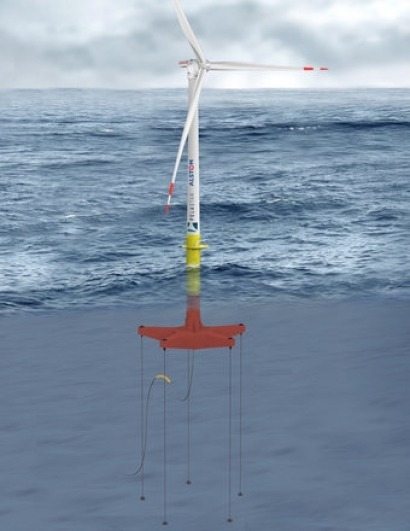
Glosten Associates (Glosten) has been awarded a contract from the UK-based Energy Technologies Institute (ETI) for the engineering phase of the floating offshore wind turbine demonstrator which is scheduled for deployment off the south coast of the United Kingdom in 2015.
The company’s PelaStar tension leg platform (TLP) foundation system has been selected for the US$6 million, 12 month contract which will complete the Front End Engineering Design (FEED) in advance of construction and deployment of a 6MW demonstration unit. Upon successful completion of the FEED, the ETI will commit up to US$31 million to the financing package for the project which is aimed at accelerating development and deployment of technologies that can exploit the UK’s vast deepwater wind resources at reduced cost. The demonstration project will showcase key PelaStar technology developments aimed at achieving cost-effective, utility scale installations. These developments include a new five-arm design that enhances reliability for the demonstration project, synthetic fiber tendons developed primarily for optimal performance while minimising material and installation costs and the integration of large, next-generation offshore wind turbines in order to achieve effective utilization of the wind resource.
“We are excited to be selected by ETI for this project” said William Hurley, PelaStar Director and Glosten program lead. “Our well-integrated team will deliver comprehensive, high-end engineering for this platform and its installation, leading us to the successful demonstration of this multi-megawatt floating turbine”
Glosten has assembled a team of expert companies to help deliver the project, including Alstom Renovables España S.L., Harland and Wolff, Dockwise, Cefas, NREL, Det Norske Veritas and MARIN. Each company will be responsible for a particular aspect of the demonstration project. Barcelona-based Alstom will provide their cutting-edge Haliade 150-6MW offshore wind turbine while Harland and Wolff will build the PelaStar foundation. Dockwise will provide offshore logistics and Cefas will lead the environmental review. The US National Renewable Energy Laboratory (NREL) will be responsible for system modelling, instrumentation and test planning and Det Norske Veritas (DNV) of Norway will provide certification. Finally, MARIN will be responsible for comprehensive scale model testing.
Further information:

